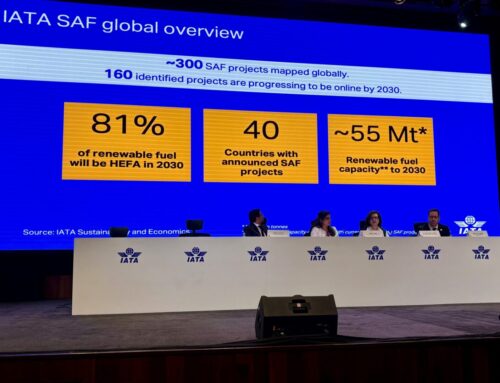Pittsburgh’s Transformation Draws Global Clean Energy Conference to Town
Granholm: Region's evolution into innovation powerhouse an inspiration
By Bob Kerlik
Published September 26, 2022
Read Time: 2 mins

More than 6,000 people from 32 countries around the world converged on Pittsburgh last week as part of a global clean energy conference, highlighting the region’s transition from old industry to a cleaner, more diversified economy.
Pittsburgh is “a town that exemplifies how a legacy energy and industrial-dependent economy can be transformed into a technology and innovation powerhouse,” said U.S. Secretary of Energy Jennifer Granholm as part of the first-ever Global Clean Energy Action Forum (GCEAF) conference.
The Department of Energy partnered with Carnegie Mellon University to host the three-day GCEAF. Pittsburgh International Airport CEO Christina Cassotis served as a member of the host committee, and the airport conducted tours for attendees of its microgrid, the first in the world to completely power an airport using natural gas and solar energy.
“We are pleased to have served on the host committee for the GCEAF conference and, along with our staff and airline partners, feel optimistic about the path to a clean energy future,” said Vince Gastgeb, Senior Vice President, Corporate & Government Affairs for the Airport Authority.
“The conference provided a better understanding as to how the aviation sector can transition to cleaner alternative fuels by using the abundance of natural gas in our region. We appreciate the Department of Energy selecting Pittsburgh to host this important forum.”
The Department of Energy used the conference as a platform to launch a competition for $7 billion to establish hydrogen hubs across the country. The money was part of the federal bipartisan infrastructure bill passed last year.
The Pittsburgh Post-Gazette reported that southwestern Pennsylvania has been waiting for this moment for months. It has assembled numerous coalitions, and last week’s Team Pennsylvania Foundation, which is helping to guide the statewide effort, released a plan for the state to pursue hydrogen made from natural gas with carbon capture and sequestration.
PIT is already exploring ways to convert to cleaner energy in addition to its microgrid. In May, airport officials announced a transformational fuel strategy for the transportation industry to lower costs, reduce emissions, and create jobs in conjunction with locally based natural gas exploration, production, midstream, and technology company CNX Resources Corp.
The idea calls for an expansion of its ongoing partnership with CNX aimed at further reducing carbon emissions in the transportation industry and related sectors by using natural gas produced at the airport and converting it into alternative fuel with CNX proprietary technology.
“We feel that natural gas and derivative products provide a path for the transportation industry both to reduce carbon emissions in the short term while working toward a goal of net-zero in the long term as hydrogen and other potential solutions mature,” Cassotis said at the time. “This is Pittsburgh innovation at work. We believe this strategy can have a global impact.”
That’s even more likely if the Pittsburgh region becomes one of the federally backed hydrogen hubs. The hydrogen initiative would build what it calls a “regional ecosystem” for the transition to clean hydrogen and carbon capture and storage, large-scale investments that leaders say put the region on a path to sustainability while creating jobs.
Airport and CNX officials say their agreement builds on the statewide initiative.






